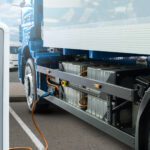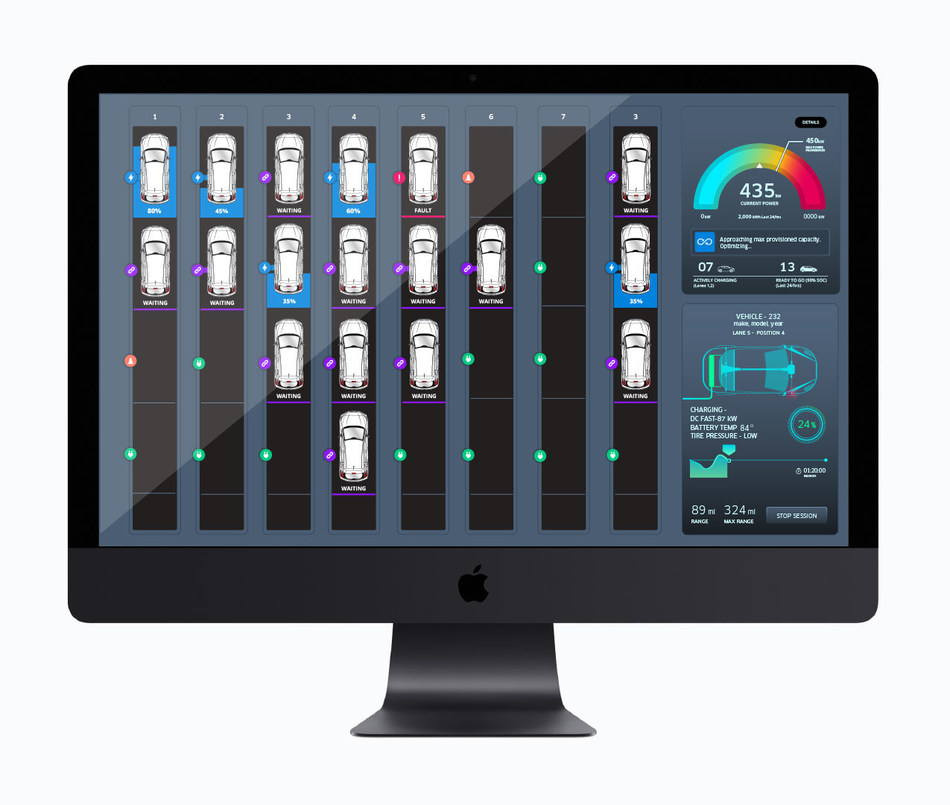Torrance, CA, July 22, 2019 – Tritium, a world leader in electric vehicle (EV) DC fast-charging technology, and Stäubli Electrical Connectors, an industry leader in high-quality connectors, today announced they have signed an agreement with SSA Marine to supply and install 33 of its DC High Power Chargers at the Port of Long Beach. The chargers will be used to power SSA Marine’s new fleet of electric-drive terminal tractors.
(Learn more about the Port of Long Beach and it’s innovative energy systems.)
The project represents the largest automated vehicle charging program at any port in the United States. Tritium’s Veefil-PK 175kW DC High Power Chargers (HPCs) will be equipped with Stäubli’s Quick Charging Connector (QCC) toenable the fast and automatic charging of all the port’s fleet of electric-drive terminal tractors, which are supplied by TransPower.
“The rollout of both the vehicles and the chargers at the Port of Long Beach will demonstrate the ability to reduce emissions while providing reliable and clean solutions to the port,” said Jeff Wolfe, President, Americas, Tritium. “The move towards the electrification of transportation is inevitable. SSA Marine is taking the initiative by seeing not just the environmental benefits of electrification, but the benefits to the bottom line as it reduces its reliance on diesel fuel.
“The key to ports operating at their optimum is efficiency, and the solution Tritium and Stäubli will provide to SSA Marine ensures the terminal tractors charge automatically, at the fastest speed possible.”
The Tritium chargers will automatically and simultaneously charge 33 terminal tractors at once, with Stäubli’s QCC enabling the automatic connection to a receptacle on each vehicle, creating a zero-touch operating environment. The QCC is touch-protected on both sides of the connector, making it possible to transmit high levels of power safely and quickly, ensuring the rapid recharge of energy storage devices. The QCC connection device offers a reliable and fully automated solution, enabling the connection of electrical vehicles for battery charging without human intervention.
The electrification of the fleet will also improve health standards for staff and nearby residents at the port. Not only will it enable a cleaner air environment with the continued reduction of diesel fuel emissions as more and more of the SSA fleet electrifies, but it will also vastly reduce noise pollution due to the conversion of the trucks from combustion engines to electrified equivalents.
Deliveries of the vehicles are scheduled to begin later this year through to October 2020, with the chargers set to be installed towards the end of 2019.
The deal with SSA Marine is part of a $50 million grant the Port of Long Beach obtained from the California Air Resources Board’s Zero and Near Zero Emission Freight Facility (ZANZEFF) program. ZANZEFF funds transform emissions reduction strategies at freight facilities throughout the state.
The project is part of California Climate Investments, a statewide initiative that puts billions of Cap-and-Trade dollars to work reducing greenhouse gas emissions, strengthening the economy and improving public health and the environment — particularly in disadvantaged communities.
Tritium and Stäubli are collaborating with SSA Marine to finalize the design and operation of the chargers. Southern California Edison (SCE) is adding additional power to the port.
“Electric transportation – including terminal tractors and other port equipment—is central to Southern California Edison’s vision for a clean energy future,” said Katie Sloan, director of eMobility for SCE. “Electrifying operations at the port means that Long Beach and surrounding communities will have cleaner air to breathe and California will reduce its greenhouse gas emissions.”
The agreement with SSA Marine continues the momentum Tritium has built in North America in the past two years. In February 2017, the company opened its first US office – which doubles as a research and development (R&D) center – in Torrance, California, and has since grown to a team of 25 across the nation and more than 300 globally.
Last year, Gilbarco Veeder-Root made a minority investment in Tritium. The investment has enabled Tritium to accelerate a number of strategic activities, including operational expansion in the US and Europe. Tritium’s proactive investments in the US have been recognized by various government offices, which has led to significant working relationships with those departments.
Also last year, the company announced it was receiving a portion of $3.2 million in federal funding awarded to Electric Power Research Institute (EPRI) by the Department of Energy, to develop an extreme fast-charging system that can connect directly to the distribution grid. EPRI allocated about $400,000 for Tritium to develop a custom version of its Veefil-PK high-powered charging head, along with providing input for system design and testing.









